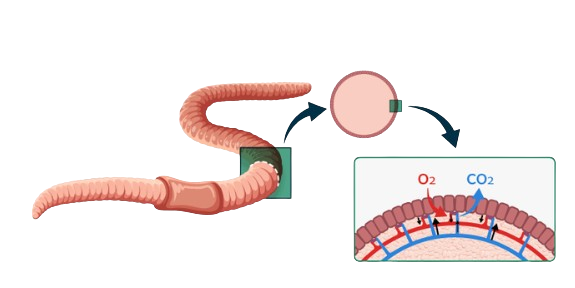Breathing in other Animals
breathing in other animals by Delta publications
Key Notes :
Introduction to Breathing:
- Breathing is the process of inhaling oxygen and exhaling carbon dioxide.
- Different animals have specialized structures for respiration depending on their habitat and physiology.
Breathing in Fish (Gills):
- Fish breathe through gills, which are specialized organs that extract oxygen from water.
- Water flows over the gills, and oxygen is absorbed directly into the bloodstream while carbon dioxide is expelled.

Breathing in Amphibians (Lungs and Skin):
- Amphibians, like frogs, can breathe through their moist skin and lungs.
- Tadpoles (larval stage of frogs) use gills to breathe in water, but adult frogs develop lungs and can also absorb oxygen through their skin when in water.

Breathing in Insects (Tracheal System):
- Insects use a network of tubes called the tracheal system to breathe.
- Air enters through tiny openings called spiracles, which lead to the trachea, allowing oxygen to reach tissues directly without blood transporting it.
Breathing in Birds (Lungs and Air Sacs):
- Birds have an efficient breathing system that includes lungs and air sacs.
- They have a continuous flow of air through their lungs, allowing for a higher oxygen exchange rate, which is vital for their high-energy activities like flying.

Breathing in Mammals (Lungs):
- Mammals, including humans, use lungs for respiration.
- Air enters through the nose or mouth, passes down the trachea into the lungs where oxygen is absorbed, and carbon dioxide is expelled during exhalation.

Breathing in Earthworms (Moist Skin):
- Earthworms breathe through their moist skin.
- Oxygen dissolves on the surface of their skin and diffuses into their body, while carbon dioxide diffuses out.

Breathing in Reptiles (Lungs):
- Reptiles like snakes and lizards rely on lungs for breathing.
- Their lungs are simpler than those of mammals but still efficient for their less active lifestyle.
Breathing in Aquatic Mammals (Lungs):
- Aquatic mammals like dolphins and whales breathe air using lungs.
- They surface periodically to inhale air through blowholes, holding their breath while diving underwater.
Let’s practice!

